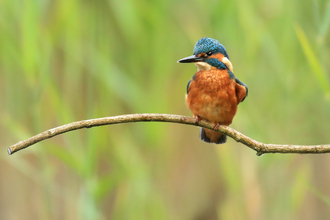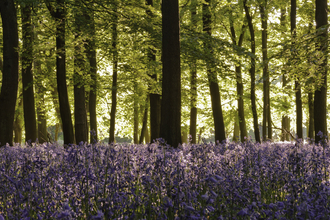The Wildlife Trusts believe that the government’s strategy is flawed because bTB is primarily a cattle problem, not a wildlife one [1] and makes no sense at a time when a review of the government strategy which drives the culls – the bovine TB eradication strategy – is still underway [2]. Only 1 in 20 cases of bTB herd infections are transmitted directly from badgers [1], thus, culling badgers is not the answer and it is also counterproductive. Culling disrupts badgers’ social structure, causing them to move around more frequently and over longer distances – which can result in increased bTB transmission.
The Wildlife Trusts have opposed badger culling for well over a decade and most recently have written to Secretary of State, Michael Gove, to highlight the flaws of the badger cull and request that the cull be ended in favour of strategic and widespread badger vaccination schemes, and to invest in developing a cattle vaccine. Yet again, this has not happened.
Ellie Brodie, Senior Policy Manager, The Wildlife Trusts says:
“It is unacceptable that the government has not waited for the results of their own review – which we understand is to be published imminently – before forging ahead with another year of ineffective and expensive badger culling. The badger cull is a dangerous distraction from addressing the main route of bTB transmission in cattle which is between cattle. [1]
“The Wildlife Trusts have been involved in this debate for over ten years. In 2008 we successfully persuaded the Labour Government not to go ahead with a badger cull. In 2012 we helped stop the initial badger cull pilot in Somerset and Gloucestershire. Simultaneously, we have led the way in demonstrating that badger vaccination would be a far more effective route, accompanied with strict biosecurity controls, movement controls and robust cattle testing regimes.
“We’re calling on the government to invest in medicine, not marksmen. The costs of killing badgers are much higher than vaccinating them – it costs £496.51 to kill a badger compared with £82 to vaccinate a badger” [3,4].
Research has found that bTB bacteria can survive for months either on fields or in slurry [5]. Strict biosecurity procedures are key to tackle this key route of the spread of bTB. Defra should provide as much support as possible to farmers to make sure these procedures and rigorous tests are in place. This approach would contribute considerably to reducing the spread of bTB between cattle and badgers.
bTB can have a devastating impact on the lives of farmers. The Wildlife Trusts continue to work with farmers to find solutions that work for everyone. Badger vaccination is cost-effective, and it works. It reduces the incidence, severity and long-term vulnerability of badger groups to the disease [6]. If government strategy must focus on badgers, this approach offers a far more effective, cheaper and low-risk way to reduce bTB in badger populations.
The government has promised to leave the environment in a better state for the next generation. Continuing and expanding the badger cull runs counter to this promise and risks pushing one of our protected native species to the verge of local extinction.
The Wildlife Trusts call on the government to:
- Halt the badger cull now.
- Invest in and promote a strategy for badger vaccination. This should be led and funded by the government, across England.
- Invest more time and resource in further research into farm biosecurity and movement controls. We need to know what works.
- Accelerate development of more effective tests for bTB in cattle and put serious investment into a bTB cattle vaccine. This is a cattle problem, not a wildlife problem.
The Wildlife Trusts are urging people to write to their MPs asking them to help stop the cull. (Find MPs here.)
You can find out more information on our website here [Link: https://www.wildlifetrusts.org/wildlife-and-wild-places/saving-species/badgers


